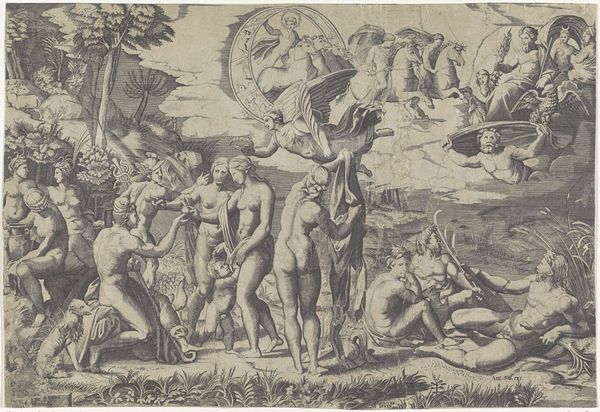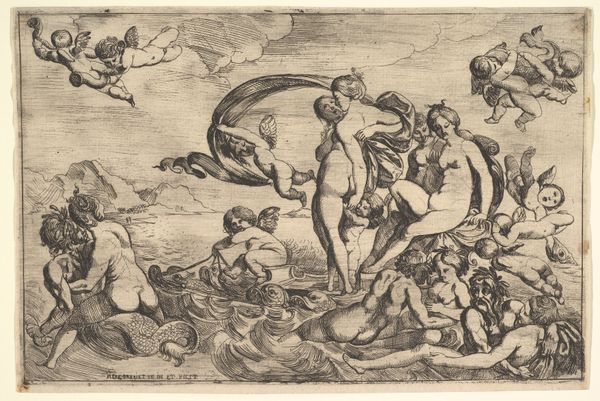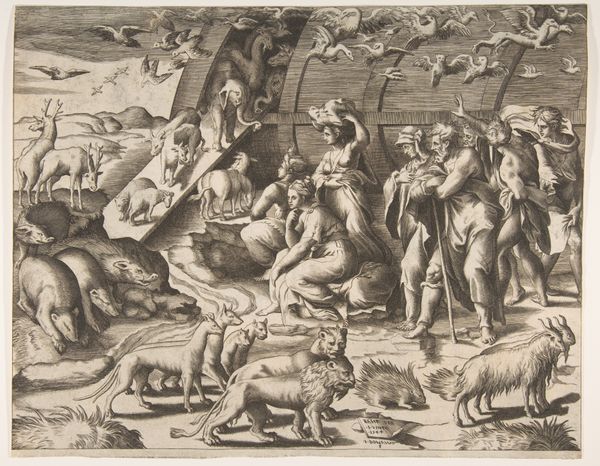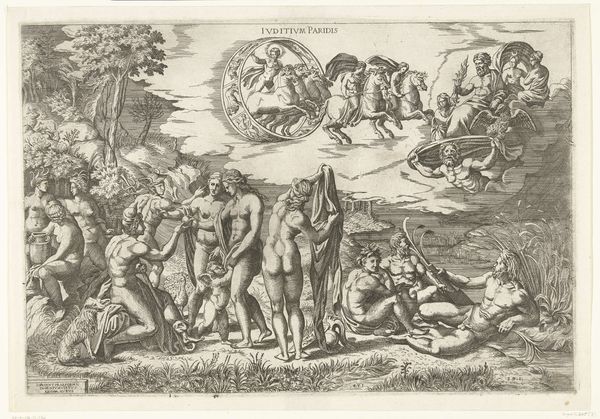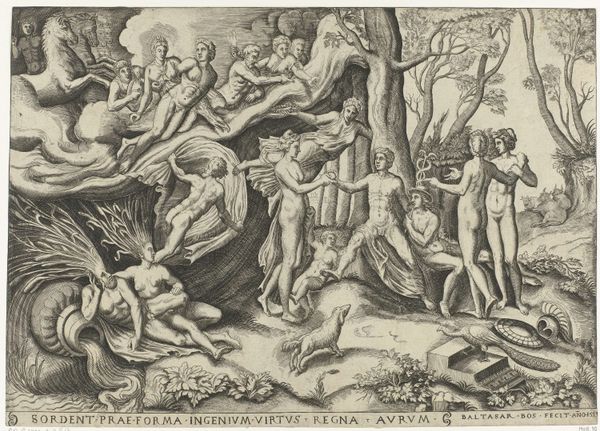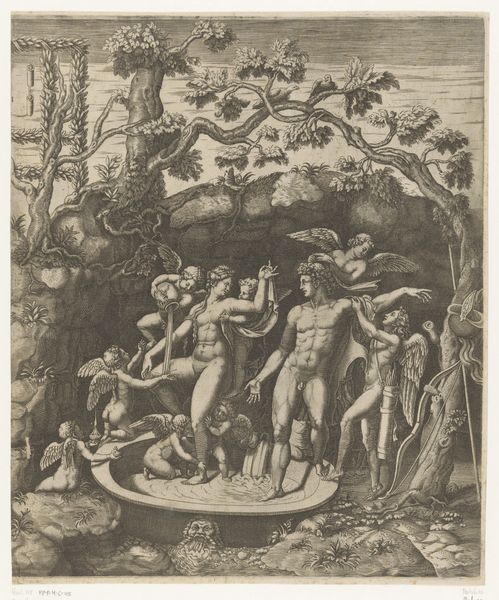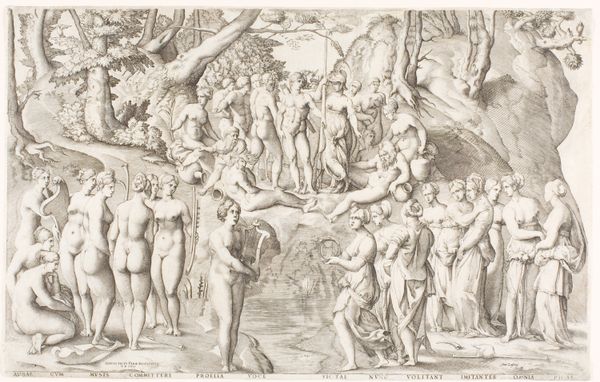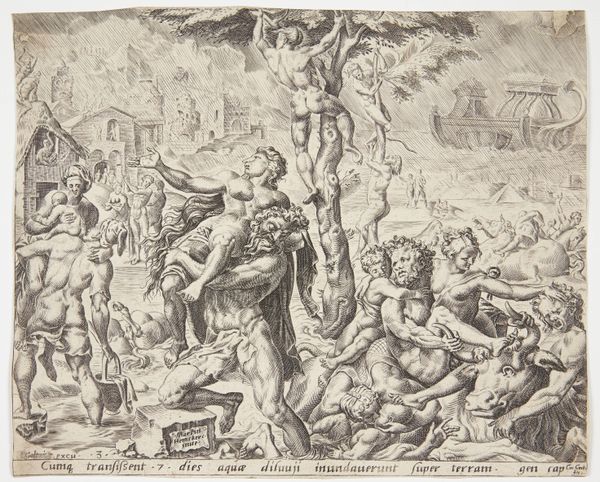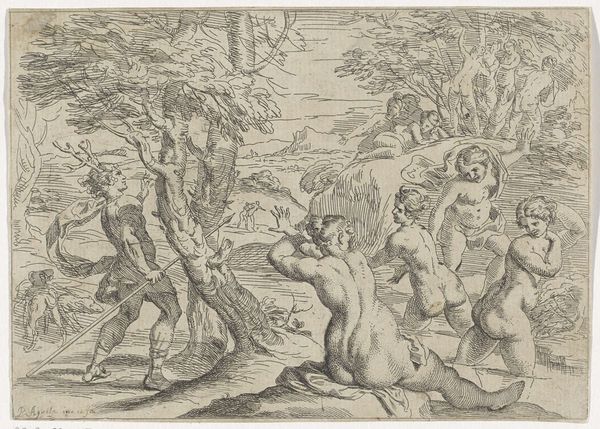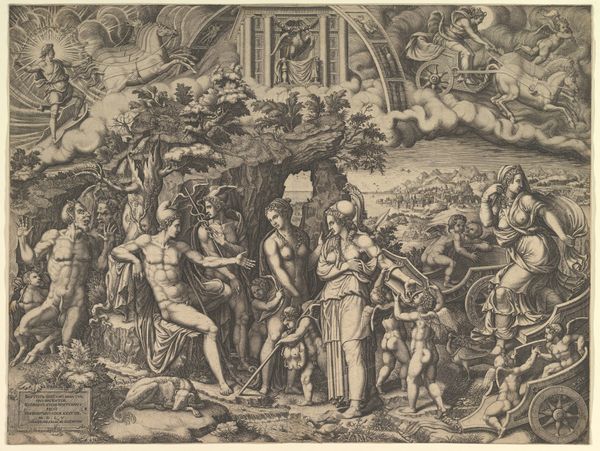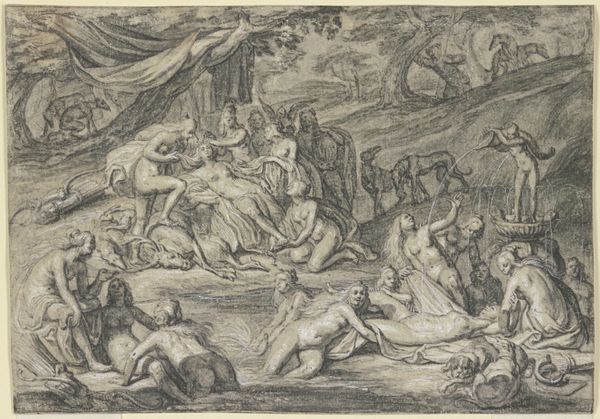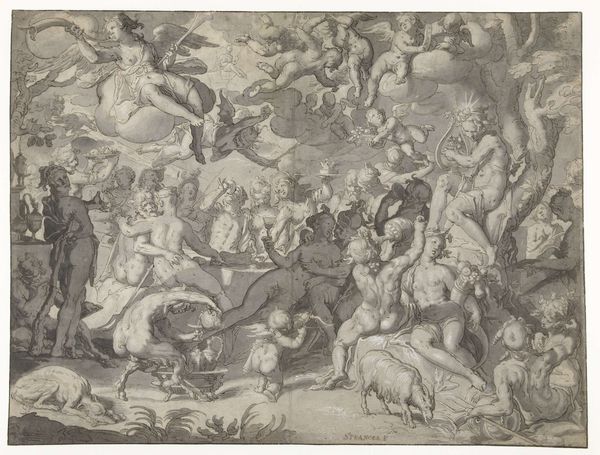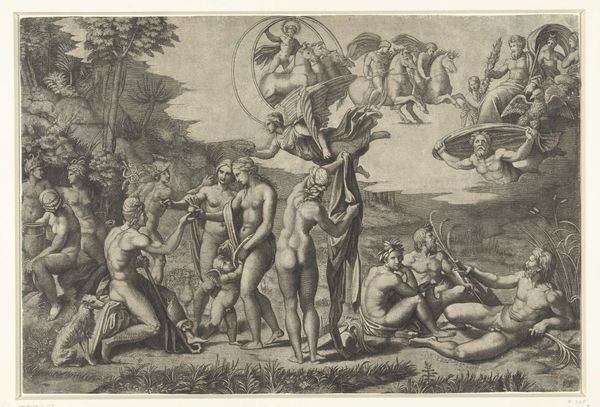
drawing, print, ink, engraving
#
drawing
#
ink drawing
#
allegory
# print
#
pen sketch
#
pencil sketch
#
mannerism
#
11_renaissance
#
female-nude
#
ink
#
history-painting
#
nude
#
engraving
#
male-nude
Dimensions: sheet: 11 15/16 x 18 1/16 in. (30.4 x 45.9 cm)
Copyright: Public Domain
Curator: What a dynamic scene. At the Metropolitan Museum of Art, we find this compelling engraving titled "The Judgment of Paris" by Giulio Bonasone, created sometime between 1540 and 1570. It presents a dense, classical tableau. Editor: My first impression is of controlled chaos. The eye bounces everywhere across this landscape crammed with figures. What strikes me, technically, is the almost dizzying density of lines used to create tone and texture. Curator: Bonasone's skill with the burin is undeniable. As a print, this would have been disseminated widely, reaching workshops and studios across Europe. This artwork facilitates the transmission of mythological narratives and the idealization of the nude form within a broader circuit of artistic production and exchange. Editor: Absolutely. Semiotically, each figure is posed to maximize the display of classical beauty. The crisp linearity gives their forms volume, allowing us to appreciate their physical grace while understanding each deity’s symbolic role within the classical tale represented here. Curator: The “Judgment of Paris” story speaks to a pivotal moment in mythology – Paris, prince of Troy, must judge who is the fairest of Aphrodite, Hera, and Athena. Bonasone emphasizes the inherent tensions present in power structures and male adjudication within this story. He emphasizes not only the idealization of feminine beauty but also how these archetypes get turned into commodities that drive competition. Editor: I see what you mean. Looking again at the engraving, the careful balance of light and shadow is what draws my attention now. The starkness accentuates the idealized anatomy, drawing viewers in, so that they, too, become complicit observers. Curator: Complicit perhaps. But prints such as these democratized imagery and knowledge, disrupting hierarchies in access and education, so their role shouldn't be simplified. Editor: It’s fascinating to think about how prints like these democratized classical imagery. Thank you for that material insight, that really adds a new dimension to my viewing of the piece. Curator: Indeed, these engravings offer fertile ground for considering not just the artistic skill involved, but also their broader circulation and cultural effects. Editor: Seeing how both classical form and Bonasone’s hand contribute to the overall impression has offered me so much more this time.
Comments
No comments
Be the first to comment and join the conversation on the ultimate creative platform.
